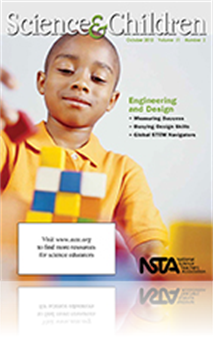All Elementary resources
NSTA Press Book
Translating the NGSS for Classroom Instruction
With the release of the Next Generation Science Standards (NGSS), you need a resource to help you answer pressing questions about how the standards fit with your curriculum, instruction, and assessments. Rodger W. Bybee has written Translating the NG...
By Rodger Bybee
Journal Article
Editor's Note: Engineering and Design
Science and Children’s editor shares thoughts regarding the current issue....
Journal Article
The Early Years: The STEM of Inquiry
This column discusses resources and science topics related to students in grades preK to 2. This month’s issue describes a STEM activity that includes designing and using a tool....
Journal Article
Teaching Through Trade Books: Flying Machines
This column includes activities inspired by children’s literature. This month’s issue uses two fiction trade books to inspire students to design and test various flying machines....
Journal Article
Engineering Encounters: Minding Design Missteps
This month's topic describes a watch list of misconceptions for beginning designers....
NSTA Press Book
The New Science Teacher's Handbook: What You Didn't Learn From Student Teaching
“One of the first activities I ask new science teachers to do in my methods course is to think of a memorable science activity from their past. Whether it’s creating an exploding vinegar and baking soda volcano, dissecting a frog, or building a m...
By Sarah Reeves Young, Mike Roberts



